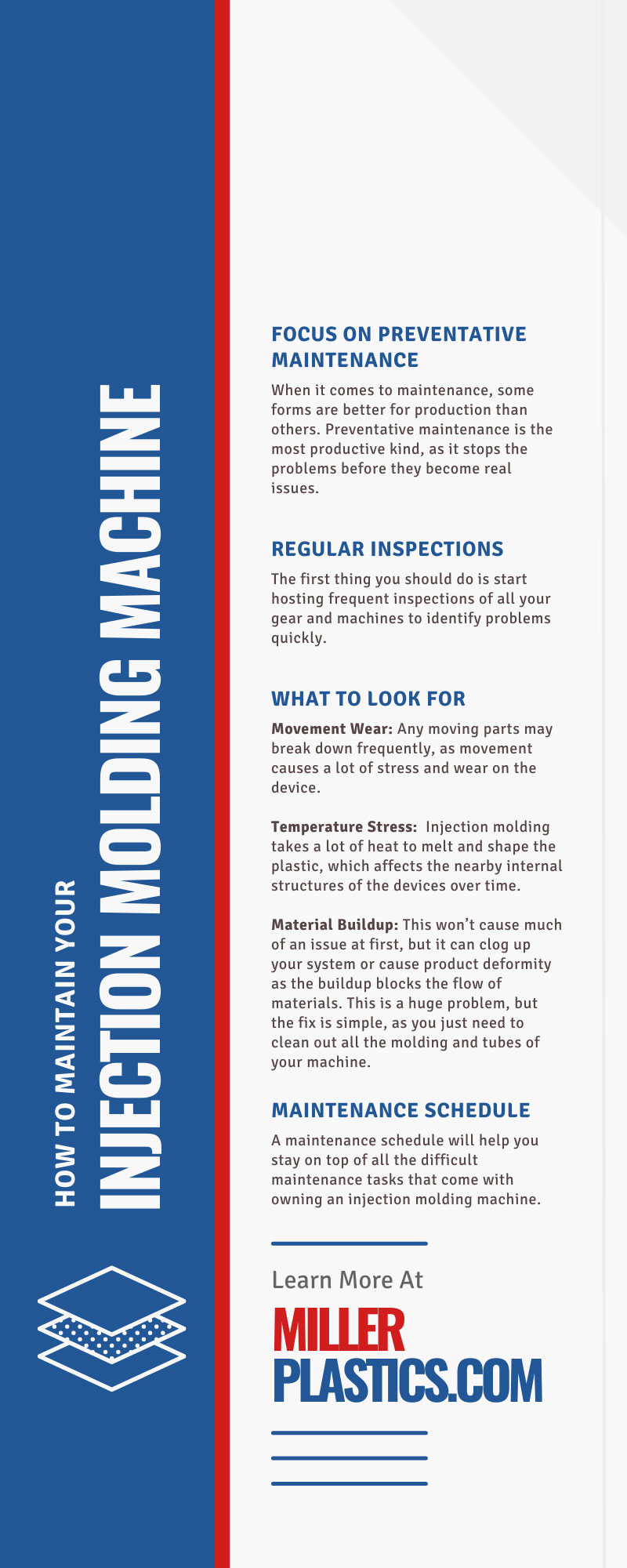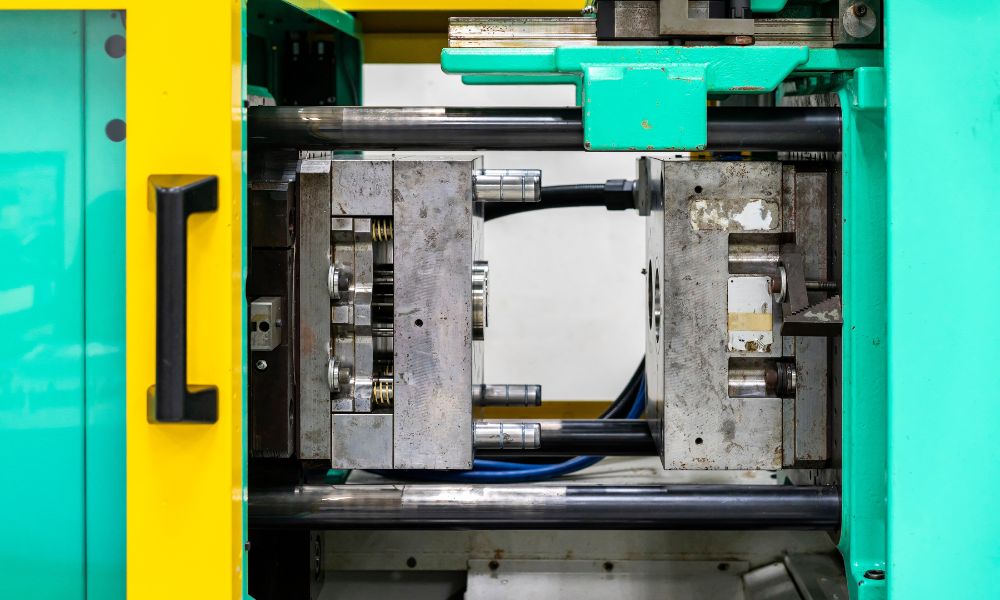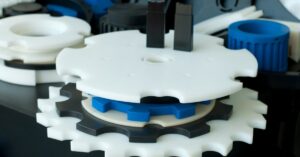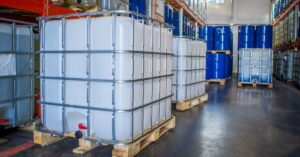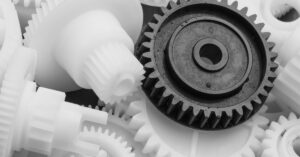Injection molding is an extremely efficient method of plastic part production manufacturers use across the world. This production method is extremely effective and efficient, with a fast turnover rate for long runs of products. It’s not unusual to see a full production line full of injection molding machines pumping out all the plastic parts a company or product might need. However, these machines need the proper maintenance to stay in working condition and to keep up that efficiency. This article will go over the reasons why maintenance is important and the best methods that’ll help maintain your injection molding machines.
The Importance of Maintenance
Maintenance is a necessity when it comes to any machine or device, but this is especially true for production machines. Maintenance is all about keeping these devices in working order, which has many benefits for the manufacturer and the companies behind the products.
Lower Costs
You should perform maintenance on your machines because it lowers the costs of production. Without proper maintenance, these injection molding machines will slowly lose efficiency as they break down. This costs you money and increases the cost per unit for every part you make from that inefficient machine.
Consistent Production
A common problem for injection molding is inconsistent production, which can occur if you don’t perform proper cleaning. Unclean machines will lead to mistakes in production and waste a lot of parts and materials over time. This costs money and resources as you need to produce more than necessary to make up for all the mistakes.
Reduced Downtime
Another major benefit of proper maintenance of your machines is less downtime for your production. When a machine breaks down and stops working, you need to stop production to replace or repair the device. This can cause days of lost production time as you wait for replacement parts, when you could have prevented the delay by performing proper maintenance in the first place.
Focus on Preventative Maintenance
When it comes to maintenance, some forms are better for production than others. Preventative maintenance is the most productive kind, as it stops the problems before they become real issues. Preventative maintenance focuses on identifying issues and resolving them early, before they affect your plastic parts fabrication. Next, we’ll go over the different types of preventative maintenance for injection molding equipment.
Regular Inspections
The first thing you should do is start hosting frequent inspections of all your gear and machines to identify problems quickly. Inspections are the only way to identify problems before they start causing real harm to your productivity and machines. Ideally, you would run a full inspection of all your equipment once a month, but some places use a rotating schedule to check 1/4th of their equipment every week.
What To Look For
When you start your inspections, you need to know what you’re looking for so you can identify the issues. It’s not possible to list every issue that could occur, but you can keep an eye out for the common signs of issues and quickly resolve them as a part of your preventative maintenance.
Movement Wear
Any moving parts may break down frequently, as movement causes a lot of stress and wear on the device. It’s a good idea to check all the moving parts for any wear and damage. Pay particular attention to the joints and any part that comes into contact with another object or part, as those will suffer more wear.
Ejector Pins
When it comes to injection molding, the ejector pins are extremely important. They remove the product from the mold once it’s done solidifying into the correct shape. However, this can cause a lot of wear on the pins as they slide and push against the various parts of the machine. So, focusing your attention on the pins can make it easy to identify wear and damage.
Temperature Stress
Another common cause of damage in these larger machines is deformity and humidity from changes in temperature. Injection molding takes a lot of heat to melt and shape the plastic, which affects the nearby internal structures of the devices over time. Check your machines for any water damage, and keep an eye on the areas that withstand extreme temperatures, as they are more susceptible to damage.
The Mold
A common place for temperature damage to build up is the mold of the machine as it holds the hot plastic. Your inspections should regularly check the mold for any condensation, as well as the nearby parts for any signs of deformity caused due to temperature fluctuations.
Material Buildup
When the plastic flows through your device and into the mold, it can leave behind trace amounts of material sticking to the internal systems of the machine. This won’t cause much of an issue at first, but it can clog up your system or cause product deformity as the buildup blocks the flow of materials. This is a huge problem, but the fix is simple, as you just need to clean out all the molding and tubes of your machine.
Runners and Mold Cavities
Focus on the runners of your machine when checking for buildup, as they’ll slowly clog up as the plastic catches to the walls of the machine. You should also check your molds and clean them carefully, as plastic can easily get stuck in the cavities and cause deformities in all the products that come from that machine.
Maintenance Schedule
Lastly, one of the most important things you should do when it comes to maintaining your injection molding machine is to create and follow a maintenance schedule. Regular maintenance is key in keeping up the efficiency and productivity of your operation. A maintenance schedule will help you stay on top of all the difficult maintenance tasks that come with owning an injection molding machine.
As long as you can follow through on your maintenance, you can rely on these machines to create your products quickly and efficiently. Whatever plastic parts or products you make, injection molding machines are some of the best tools available. However, that’s only the case if you regularly perform maintenance on your machines.
